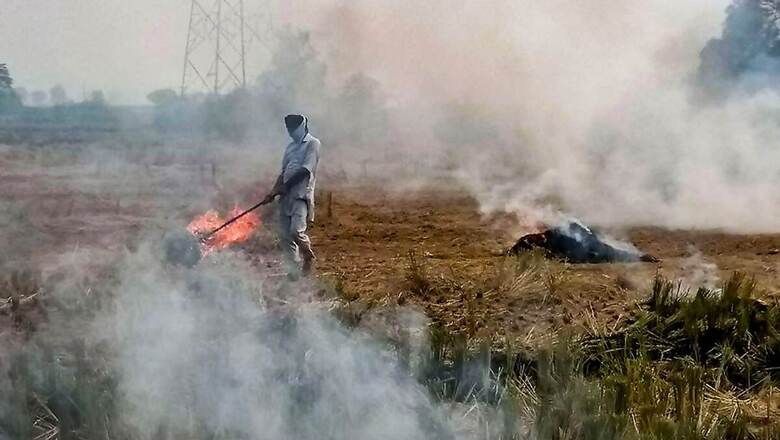
views
The national capital's air quality remained 'very poor' on Sunday, with stubble burning contributing 40 per cent to Delhi's pollution and negating the effect of better ventilation, according to a government forecasting agency. The Air Quality Early Warning System for Delhi said the air quality is likely to hit 'severe' levels tonight, but will slip back into the 'very poor' category on Monday.
The city recorded a 24-hour average air quality index (AQI) of 364. It was 367 on Saturday, 374 on Friday, 395 on Thursday, 297 on Wednesday, 312 on Tuesday, and 353 on Monday. An AQI between 0 and 50 is considered 'good', 51 and 100 'satisfactory', 101 and 200 'moderate', 201 and 300 'poor', 301 and 400 'very poor', and 401 and 500 'severe'.
The Ministry of Earth Sciences' air quality monitor, SAFAR,said the share of stubble burning in Delhi's pollution rose to 40 per cent on Sunday, the maximum so far this season. It was 32 per cent on Saturday, 19 per cent on Friday and 36 per cent on Thursday, the second highest this season so far.
It said 3,216 farm fires were spotted over Punjab, Haryana, Uttar Pradesh and Uttarakhand on Saturday. Last year, the stubble contribution to Delhi's pollution had peaked to 44 per cent on November 1, according to SAFAR data. NASA's satellite imagery showed a large, dense cluster of fire dots covering Punjab and parts of Haryana and Uttar Pradesh.
SAFAR said air quality has not improved much despite improved ventilation due to high stubble-related intrusion and trapping of pollutants during night time due to low wintertime boundary layer height. "However, it has not deteriorated further despite favourable North-North-Westerly boundary level wind direction. The highly favourable conditions for fire-related intrusion in Delhi is expected to continue," it said.
SAFAR predicted better ventilation for the next two days but said the AQI is likely to improve only marginally, depending on farm fires. It is set to deteriorate slightly on November 3. According to the India Meteorological Department, the predominant wind direction was northwesterly and the maximum wind speed was 15 kilometers per hour on Sunday.The city recorded a minimum temperature of 11.4 degrees Celsius, the lowest in the season so far.
Calm winds and low temperatures trap pollutants close to the ground, while favourable wind speed helps in their dispersion. According to the central government's Air Quality Early Warning System for Delhi, the city's ventilation index a product of mixing depth and average wind speed was around 10,000 meter square per second on Sunday favourable for dispersion of pollutants.
Mixing depth is the vertical height in which pollutants are suspended in the air. It reduces on cold days with calm wind speed. A ventilation index lower than 6,000 sqm/second, with the average wind speed less than 10 kmph, is unfavourable for dispersal of pollutants.
Read all the Latest News and Breaking News here



















Comments
0 comment